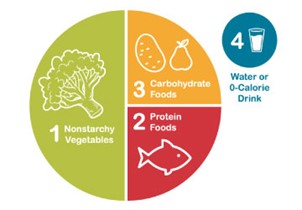Nutrition and Diet Guidelines: Two Months Before Surgery
Because bariatric surgery changes your anatomy, it will require you to develop healthy habits that last a lifetime if you want to maintain weight loss. The sooner you start, the more prepared you’ll be for surgery, recovery, and the rest of your post-operative journey.
Start with these simple changes:
- Eat your meals slowly, taking 20 – 30 minutes to finish. This keeps your portions in check and allows you to enjoy your food more.
- Eat a small, protein- and fiber-rich meal or snack every three to four hours to stabilize blood sugar, maintain energy, and prevent overeating.
- Don’t eat while watching TV, driving, or using electronic devices, which can result in mindless eating. When you limit distractions, you can focus more on hunger and fullness cues and avoid overeating.
- Try to drink 64 ounces of zero-calorie liquids a day. Hydration is key to optimal health, improving brain function, regulating hunger, increasing energy, and more. You’ll know you’re hydrated enough if your urine is pale yellow or clear. You should also avoid caffeinated and carbonated beverages.
- Get your family involved by letting them have a say in weekly meal planning, preparing meals together, and getting them on board with healthier living.
The Plate Method
Following this simple eating “formula” can greatly help with portion control. After surgery, you’ll continue to follow the plate method (during Stage IV), but with smaller portions. By starting now, you’ll be more successful transitioning to smaller portions later.

